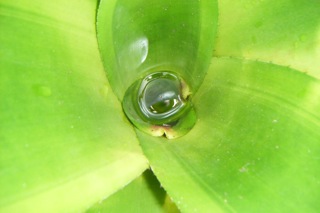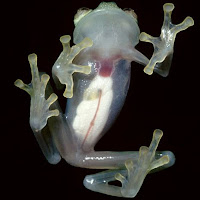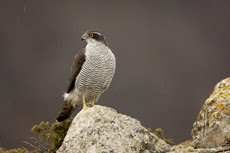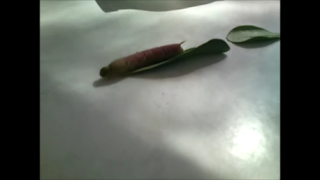As you know the TDM gives its readers links to many videos, however we have decided that our watch page is very untidy and we are moving them all to a new blog, naturevideodirectory.blogspot.com ! Enjoy!
The TDM Team
Friday 9 December 2011
Saturday 26 November 2011
Thursday 24 November 2011
Amazing "Brinicle"
Fantastic Frozen Planet footage of salt doing doing something you never knew it could.
http://www.bbc.co.uk/nature/15835017
The TDM Team
http://www.bbc.co.uk/nature/15835017
The TDM Team
Saturday 22 October 2011
The Badger
 |
| European Badger |
Badgers are omnivores. They live underground in a network of tunnels called a set. Sometimes these sets are shared with foxes. They have very special jaws that are almost impossible to dislocate meaning that it can maintain its hold on prey with great tenacity but this limits its jaw movements. The Honey Badger of Africa is a vicious predator that eats venomous snakes as well as honey and porcupines!
| Honey Badger |
European badgers are fond of peanut butter but should not be used to attract them as they may react badly to humans.
http://www.bbc.co.uk/nature/life/European_Badger#p0086g7x
http://www.bbc.co.uk/nature/life/European_Badger#p007x2gc
http://www.bbc.co.uk/nature/life/European_Badger#p0086g7x
http://www.bbc.co.uk/nature/life/European_Badger#p007x2gc
Sunday 16 October 2011
The Kestrel
 |
| Kestrel Hovering (from RSPB) |
Kestrels are dynamic predators that feed on small mammals and other birds. They have a wingspan of 60-65cm. A male is called a tercel and a female is called a falcon. They are not fast or powerful fliers but have the ability to hover for long periods of time.
They live in most habitats but they do not like dense forests, treeless wetlands and mountains.
http://www.youtube.com/watch?v=31Xw75hAwIc
http://www.youtube.com/watch?v=_03F49thJ6s&feature=related
Thursday 15 September 2011
Amazing Bottlenose Dolphins
Watch this amazing video http://www.bbc.co.uk/nature/adaptations/animal_cognition#p00jtfy1
Then publish your thoughts in the comments box.
Then publish your thoughts in the comments box.
The TDM
Sunday 11 September 2011
Barn Owl Births
TDM Extra
The TDM has launched its new "TDM Extra" blog (tdmextra.blogspot.com). For more information just click on the "EXTRA" symbol!
The TDM Team
The TDM Team
Sunday 21 August 2011
The TDM Blog is Back!
Sorry about the blog being down for a few days. Technical difficulties.
The TDM Team
The TDM Team
Sunday 14 August 2011
The Earwig's Many Homes
While pumping up a bicycle wheel with a bicycle pump the TDM noticed how there were lots of earwigs "appearing" on the ground. Then we noticed they were jumping out of the pump! When you think about it a rarely used bicycle pump is a great home!
The TDM Team
The TDM Team
Wednesday 10 August 2011
The Bat Saga
Dear Reader
The TDM has found out how dedicated people save the lives of wild animals every day. The day before yesterday the TDM found a tiny bat under a ground floor window ledge in our house. Here is a video we prepared but were unable to post:
(We still need help identifying the bat)
At the time that that video was filmed we suspected that the bat was lost and would fly away in the evening. However, it was found later by two members of the TDM on the ground outside our front-door as dusk fell. It was trying to fly but it could not because it was so weak.
Another member of TDM sought advice from the Bat Conservation Trust website about how to care for a bat. (Remember, by the way, to always use thick gloves when handling bats as a small number carry rabies.) It was carefully placed in a PG Tips box (without being touched directly) which contained water (in a small jar lid), grass and a piece of cloth for warmth. Later in the evening it was suspected to have died (having clearly tried to drink some of the water) but the curator of the TDM did not believe that was so. After watching the bat for a long time, he saw it move. It was alive!
It was left in a box overnight and was yet again suspected dead again in the morning. But the curator yet again watched it until it moved. We contacted the Bat Conservation Trust and they quickly told us how to care for it and told us of the nearest place that would look after a bat! This was quite near (only a twenty minute drive away) and was called Wildlife Aid.
We took the bat there where it was seen to as soon as we arrived. It was still alive and started getting better as soon as it was fed! If these people did not give up their time for British wildlife this Bat and no doubt countless other wild animals would have never survived. So a big" thank you" to all those people who do give up their time for this cause.
So, if you ever find an injured or sick animal don't panic. There are people there to help you!
The TDM Team
The TDM has found out how dedicated people save the lives of wild animals every day. The day before yesterday the TDM found a tiny bat under a ground floor window ledge in our house. Here is a video we prepared but were unable to post:
(We still need help identifying the bat)
At the time that that video was filmed we suspected that the bat was lost and would fly away in the evening. However, it was found later by two members of the TDM on the ground outside our front-door as dusk fell. It was trying to fly but it could not because it was so weak.
Another member of TDM sought advice from the Bat Conservation Trust website about how to care for a bat. (Remember, by the way, to always use thick gloves when handling bats as a small number carry rabies.) It was carefully placed in a PG Tips box (without being touched directly) which contained water (in a small jar lid), grass and a piece of cloth for warmth. Later in the evening it was suspected to have died (having clearly tried to drink some of the water) but the curator of the TDM did not believe that was so. After watching the bat for a long time, he saw it move. It was alive!
It was left in a box overnight and was yet again suspected dead again in the morning. But the curator yet again watched it until it moved. We contacted the Bat Conservation Trust and they quickly told us how to care for it and told us of the nearest place that would look after a bat! This was quite near (only a twenty minute drive away) and was called Wildlife Aid.
We took the bat there where it was seen to as soon as we arrived. It was still alive and started getting better as soon as it was fed! If these people did not give up their time for British wildlife this Bat and no doubt countless other wild animals would have never survived. So a big" thank you" to all those people who do give up their time for this cause.
So, if you ever find an injured or sick animal don't panic. There are people there to help you!
The TDM Team
Monday 25 July 2011
Beaked Whales
Little is known about these brilliant creatures but we do know a bit about how they communicate!
http://www.bbc.co.uk/nature/14254582
The TDM Team
http://www.bbc.co.uk/nature/14254582
The TDM Team
Wednesday 20 July 2011
Giant Water Lily
This very interesting clip from "The Private Life of Plants" not only reminds us of the enormity of the plants but informs us about their very clever flowers!
http://www.youtube.com/watch?v=igkjcuw_n_U
The TDM Team
(The link can also be found on the "Watch" page!)
http://www.youtube.com/watch?v=igkjcuw_n_U
The TDM Team
(The link can also be found on the "Watch" page!)
Monday 18 July 2011
Torrent Duck
These amazing Ducks have adapted to survive the rapids. One of my favorite nature videos: http://www.youtube.com/watch?v=WW10NT9Qw08
The TDM Team
The TDM Team
The "Watch" Page
The TDM's new "Watch" page is full of links to videos of the amazing natural world! Any interesting videos about nature are shown, so that you can discover more interesting facts about the natural world!
The TDM Team
The TDM Team
Sunday 17 July 2011
Saturday 16 July 2011
Heron Nature Museum Society: Finally some Rain!
Heron Nature Museum Society: Finally some Rain!: "After a long absence (by English standards) the rain has returned! You may be questioning the title of this post if you are a golf fan but ..."
Click the link to continue reading
The TDM Team
Friday 15 July 2011
TDM Ant Blog 2011: Flying Ants
TDM Ant Blog 2011: Flying Ants: " You may be noticing winged ants flying about (Depending on where you are in the world). These could be either male or queen ants ( as ..."
Click the link to continue reading this post!
The TDM Team
Friday 8 July 2011
Wednesday 6 July 2011
Tuesday 5 July 2011
In the New Forest
Silver-washed Fritillary
This lovely picture was taken in the New Forest. We found a large amount of these in the New Forest. There were loads!
The TDM Team
Tuesday 21 June 2011
The Heron Nature Museum Society
We are now a member of the Heron Nature Museum Society, a new initiative set up by the TDM and NNM. Please visit the site at heronnaturemuseumsociety.blogspot.com.
Sunday 19 June 2011
TDM Ant Blog 2011: What are we doing?
TDM Ant Blog 2011: What are we doing?: "We are conducting a survey into the lives of our ants in our back-garden. We will upload pictures and videos to our blog to help you and us ..."
TDM Ant Blog 2011
This year the TDM is doing a study into the ants in our back-garden. We will be finding out about them and about ants in general! To visit this new site click the link tdmantblog2011.blogspot.com
THe TDM Team
THe TDM Team
Amur Leopards
There are only 35 Amur leopards left in the wild. Are we watching over the extinction of this beautiful animal?
The TDM Team
The TDM Team
Monday 13 June 2011
Saturday 11 June 2011
Monday 6 June 2011
Anteater
Did you know that anteater's have 2 foot long tongues!
Image from The Online Anteater
Follow their blog at http://onlineanteater.blogspot.com/
The TDM Team
Saturday 4 June 2011
Skunks
I imagine you know that Skunks can produce a foul smell out of their behind, but did you know that they can only see for 3 metres!Sadly this means that many are killed by cars... Only 10% live over three years...
The TDM team
The TDM team
Friday 3 June 2011
Kiwi
The Kiwi is a flightless bird that lives in New Zealand, it is also the kiwi's national bird. It hold the record for the biggest egg to body size ratio on earth! But how big is it? About the size of a chicken.
The TDM Team

The TDM Team

Tuesday 24 May 2011
Glass Frog
Did you know that the glass frog has a transparent underside, this means you can see what it had for dinner. Also the males sometimes eat their children!
Picture from the News Chronicle
The TDM Team
Saturday 21 May 2011
The Kakapo
You may have been reading about the Kakapo on "Another Chance To See" (a blog I found a few days back) but I thought it would be useful to know a little bit more about it. It is a large, flightless, nocturnal parrot found in New Zealand. They are critically endangered on the IUCN Red List. They can weigh between 2 and 4 kilograms at maturity. Unlike other land birds the Kakapo can store large amounts of energy in the form of body-fat. It also has a fantastic sense of smell which is perfect for it's nocturnal lifestyle. Thats a little bit of info for you!
The TDM Team
The TDM Team
Thursday 19 May 2011
Grey Seals
Did you know that half the worlds population of grey seals live in Britain?
If you have any more Grey Seal facts feel free to tell the world by commenting!
The TDM Team
If you have any more Grey Seal facts feel free to tell the world by commenting!
The TDM Team
Wednesday 18 May 2011
Conservation Blog
While surfing the net we found a brilliant blog called "Another Chance To See." The blog describes it as
"Endangered animals news for Last Chance To See by Douglas Adams, Mark Carwardine and Stephen Fry"
Have a look, its really good!
Here's the link! http://www.anotherchancetosee.com/
The TDM Team
How many teeth?
The great white shark may use or lose more than 1000 teeth during its life time!
The TDM Team
The TDM Team
Tuesday 17 May 2011
Clown Fish
Clown fish hide in sea anemones, as you probably know sea anemones sting and contain poison. Sea anemones don't sting them because their saliva is based on sugar rather than protein so the sea anemones doesn't see it as a threat and they become immune to their host sea anemone.
The TDM team
The TDM team
Monday 16 May 2011
Our New Poll
The new TDM Poll is up and running the question is:
"What is your favorite marine animal?"
Go on pick one! For pictures just click on our "What is your favorite marine animal?" page. If you want to share your opinions just comment and it could swing the vote in your animals favor!
The TDM Team
"What is your favorite marine animal?"
Go on pick one! For pictures just click on our "What is your favorite marine animal?" page. If you want to share your opinions just comment and it could swing the vote in your animals favor!
The TDM Team
Sunday 15 May 2011
The Poll is closed!
The poll is closed and the results are in!
Peregrine Falcon
1 (12.5%)
Golden eagle
1 (12.5%)
Red Kite
2 (25%)
Goshawk
4 (50%)
So its a rampant victory for the Goshawk!
Image from RSPB images
For more information on all the birds in the poll click this link: http://www.rspb.org.uk/Images/wingprayer_tcm9-188788.pdf
The TDM Team
Saturday 14 May 2011
Manx Shearwater
Did you know that 90% of the Manx Shearwater population live on a few remote British islands! The first people to encounter these birds were marauding vikings, they were scared off by the weird noises the birds make! Also their chicks are so fat and full of fish oil that they were used to burn oil lamps, horrible! Another fact is that they are so scared of predators and humans that they never land on their nest islands in daytime, never!
(Image from RSPB images)
The TDM Team
(Image from RSPB images)
The TDM Team
Thursday 12 May 2011
One Long Snake
The worlds longest snake was a reticulated python that was 32 feet 9 1/2 inches long. Wow one massive snake!
The TDM Team
The TDM Team
Tuesday 10 May 2011
The Barreleye
The Barreleye has a transparent dome shaped head to protect its eyes from jellyfishes stinging tentacles. It steals food from jellyfishes!
The TDM Team
The TDM Team
Star-Nosed Mole
Star-nosed moles are easily identified by the eleven pairs of pink fleshy appendages around their snout which are used as a touch organ with more than 25,000 sensory receptors!
The TDM Team
The TDM Team
Amazonian Fact
The Amazon Rainforest covers over a billion acres. If Amazonia was a country, it would be the ninth largest in the world!
The TDM Team
The TDM Team
Monday 9 May 2011
Tawny Owl
The Tawny Owl is one of the nosiest creatures of the night but did you know it is only the size of a pigeon! No, they're not very big! For more information please visit: http://www.rspb.org.uk/wildlife/birdguide/name/t/tawnyowl/index.aspx
The TDM Team
The TDM Team
Did You Know?
There are more than 300'000 species of beetles! They are the largest order of insects in the world!
The TDM Team
The TDM Team
Sunday 8 May 2011
Great White Sharks
Great White Sharks have up to 300 serrated teeth! They have organs that can sense the tiny electromagnetic fields around animals. However it must be remember that these sharks are more fearsome in our imaginations than in reality.
The TDM Team
The TDM Team
Saturday 7 May 2011
Silent Flying
Did you know that barn owls can fly silently? Well, you do now. Barn Owl's huge 42" wingspan means that they can fly slowly, making less noise, and also they have soft fringe-edged feathers that don't make a sound. Perfect for sneaking up on prey!
The TDM Team
The TDM Team
The Blue Whale
The Blue whale can be over 33m long! Its is also the largest ever animal and the biggest mammal! Imagine swimming with one of those!
The TDM Team
The TDM Team
New Poll
"What is your favorite Bird of Prey." That is the question. Four birds have been nominated. So choose one. For more information please click this link http://www.rspb.org.uk/Images/wingprayer_tcm9-188788.pdf
Please remember to vote!
The TDM Team
Please remember to vote!
The TDM Team
Friday 6 May 2011
The Poll is closed!!!
The Results are in...
In first place... The Blue Tit with 3 votes!
In second place... The Robin with 2 votes!
In joint third place... The Great Spotted Woodpecker and The Goldfinch with one vote!
The TDM Team
In first place... The Blue Tit with 3 votes!
In second place... The Robin with 2 votes!
In joint third place... The Great Spotted Woodpecker and The Goldfinch with one vote!
The TDM Team
Thursday 5 May 2011
Glowing Insects
Living scorpions reflect ultraviolet light and can glow with an eerie greenish colour when exposed to UV light, no matter what colour they appear under normal lighting conditions. Wow glow in the dark insects!
The TDM Team
The TDM Team
Wednesday 4 May 2011
The Heaviest Elephant
The heaviest ever recorded elephant weighed 11'000 KG! This adult male was a whole meter taller than the average elephant. Elephants are the largest land animals living on earth at the moment they have no natural predators (lions may take week elephant or a calf) their main predator is us.
The TDM Team
The TDM Team
Hummingbirds
Hummingbirds are the only type of bird that can fly backwards! They can hover in mid-air by rapidly flapping their wings 12–90 times per second depending on the species. They can also fly at speeds faster then 15 m/s!
Wow fantastic flying!
The TDM Team
Wow fantastic flying!
The TDM Team
A Tall Creature
The Giraffe grows from 4.3 to 5.2 meters approximately. They use their hight to eat leaves from the topmost branches of trees where other animals can't reach.
The TDM Team
The TDM Team
Tuesday 3 May 2011
Poison Dart Frogs
Poison Dart Frogs are 1.5 to 6 centimeters long however the most poisonous of these frogs (The Golden Poison Frog) has enough toxin (on average) to kill ten to twenty men! (The rough equivalent of ten thousand mice!)
The TDM Team
The TDM Team
Monday 2 May 2011
How Fast Does Bamboo Grow?
Bamboo has been measured growing upwards as fast as 100cm in a 24-hour period. Thats a lot of growing!
The TDM Team
The TDM Team
Dear Readers
Thank you very much for reading our blog. We have reached 100 page views.
Thanks,
The TDM Team
Thanks,
The TDM Team
Sunday 1 May 2011
Saturday 30 April 2011
Friday 29 April 2011
Tiny Flowers
A bouquet of a 12 Wolffia blooms would fit on the head of a pin! Wow, tiny!
The TDM Team
The TDM Team
Thursday 28 April 2011
How High Do Birds Fly?
During migration birds generally fly at around 10'000 feet. However some birds have been reported to fly at 20'000 feet! Imagine flying at that hight without being in a plane, wow!
The TDM Team
The TDM Team
The Poll So Far!
With 7 days left to vote:
The Robin has 1 vote
The Blue Tit has 2 votes
The Great Spotted Woodpecker has 1 vote
The Goldfinch has no votes
The TDM Team
The Robin has 1 vote
The Blue Tit has 2 votes
The Great Spotted Woodpecker has 1 vote
The Goldfinch has no votes
The TDM Team
Wednesday 27 April 2011
A Caterpillar
We spotted this little beast on a campsite in Elba, an island off the Tuscan coast. (Tuscany is in Italy.)
Can you identify what it is?
(We don't know ourselves so there are no prizes for giving an answer!)
Please give your answer in the comments box.
Thank You
The TDM Team
Can you identify what it is?
(We don't know ourselves so there are no prizes for giving an answer!)
Please give your answer in the comments box.
Thank You
The TDM Team
The NMM
The NNM is by far and away one of the best collections of nature ever on this planet, with enthusiastic staff and a fabulous collection. It is well worth a visit to its website http://thennm.blogspot.com/
The TDM Team
The TDM Team
Hope You Enjoy
Dear Readers
Thank you very much for reading our blog, we hope to keep you updated on subjects regarding the TDM and we hope to offer a detailed nature (and more) blog at the same time.
The TDM Team
Thank you very much for reading our blog, we hope to keep you updated on subjects regarding the TDM and we hope to offer a detailed nature (and more) blog at the same time.
The TDM Team
Subscribe to:
Posts (Atom)











